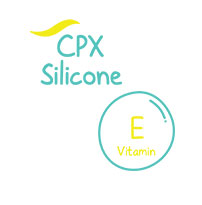Instagram filters are lots of fun – but once the novelty wears off, the star of your selfies is really you.
Besides, it’s time to buck the trend. Studies have shown that Instagram usage and filters contribute to increased social comparisons and a negative self-esteem.1 So, the next time you pick up your phone for a selfie, think twice before using that filter – and show the world the real you!
Remember, you’re better than any filter. And your friends (and followers) will appreciate your honesty and bravery for going #filterfree.
#1: Natural lighting is your best friend
Forget make-up and filters, the real secret to great looking photos is lighting – specifically, natural lighting that gives your selfies a warm and natural look, accentuating your innate facial features. (Imagine “bright, sunny beachside photos” and you’ve got the picture!)
Here are a couple of tips for using natural lighting to capture amazing selfies:

Sunlit selfies work best when facing the sun when it is low, as eye-level lighting brings out your best facial features
When shooting indoors, softer, diffused sunlight can reduce glare – so face your light source (i.e., a window) and snap at eye-level for natural lighting to work its magic


When indoors, avoid fluorescent light as the artificial lighting can tint skin with unflattering shades of yellow or green
#2: Know your best side
Influencers with the best “selfie game” know the side that gives them that more sophisticated, desirable look. This can be as simple as tilting your head up and down, and rotating it left or right.
There's no exact science to this, but generally, tucking your chin down and tilting your head ever so slightly makes your face more angular and well-defined. Experiment with this by gazing deeply into the camera lens, then let the natural lighting radiate your cheeks and decide which is your best side.
#3: Angle for a different look
When snapping selfies, do you look straight ahead into your camera… and wonder why your selfies don't look as interesting as you’d like them to be?
That's because different camera angles can dramatically change the look and feel of a selfie (which is great news for you, because this simple tweak will change your #selfiegame forever)!
Try this instead:

Hold your phone slightly above your face (this decreases the intensity of the photo and makes your expressions appear “softer” and more inviting)
Experiment with a range of facial expressions, and you’ll quickly realise how this angle shift immediately makes it easier (and more fun) to emote


Test out several angles (including low angles) to see which ones you like best – remember, sometimes even a few degrees can make a big difference to how your selfies look and feel
#4: Good food for good skin
It’s no secret that glowing, healthy skin looks great on camera – without the need for touch-ups, chic outfits or an array of filters.
And the best way to have great looking skin, isn’t by applying a filter – it’s by keeping to a healthy diet that will nourish your skin. Hydrating yourself with at least two litres of water a day will help to keep your skin looking healthy, while avoiding high-glycaemic foods and beverages (as well as cow’s milk), may help to reduce breakouts.2
Additionally, many dermatologists agree that your skin need good “food” too. These come in the form of a gentle cleanser, a moisturiser, and sunscreen.3 So keep your skin clean, moisturised and protected every day. Your selfies will show the results of your newfound diet and skincare routines!
#5: Acne or maskne? Have no fear.
In today’s “mask on while outdoors” world, maskne is a reality for many of us. Face masks lead to added build-up of dirt, oil and dead skin – prime conditions for acne breakouts, which may result in acne scars. And while digital filters may smoothen skin on Instagram, we know you’d rather have your skin look great in real life too.
The good news is that you can reduce the appearance of these issues with a safe, topical treatment like Dermatix® Acne Scar. Dermatix® Acne Scar contains ActivGCS, Vitamin B3, zinc and niacinamide – which important active ingredients in any acne-related product you choose, as these help to lighten dark spots, marks and scars4,5,6.
Try this instead:

What is ActivGCS? It’s the equivalent of snail slime extract, which possesses anti-bacterial properties that aid healing and protects the skin.7 Meanwhile, Vitamin B3 may reduce inflammation and minimises hyperpigmentation 8, and zinc’s anti-inflammatory properties suppresses sebum production to help manage acne.9
Dermatix® Acne Scar’s two other active ingredients – its CPX silicone gel technology and Vitamin E – act as a shield for your skin. The former protects your skin from the harsh environment for more conducive scar recovery10, while the latter's antioxidant properties stabilise your skin's protective barrier.11 With these active ingredients, many users notice visible improvements in as little as 4 weeks!12 For more information, watch this video.

#filterfree for life
Be confident. Be you. Be #filterfree. Give these tips a try for a week and show the world the real, self-assured you in your next selfies. Once you experience the freedom of a #filterfree life, you’ll never want to go back!






